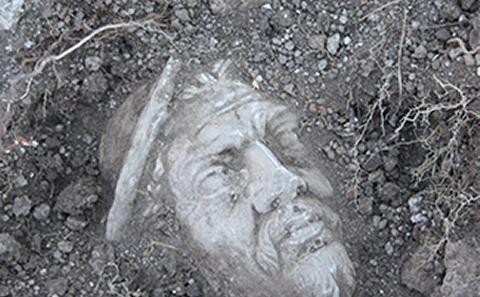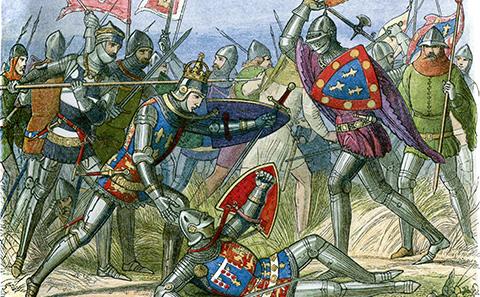Studying a slaveholder
Analysing the letters of a prominent sugar planter, Simon Taylor, to understand the mentality of the slaveholders.
Southampton historian Professor Christer Petley’s research on prominent slaveholder Simon Taylor sheds new light on the greed, cruelty, fear, and fury that were prevalent during the years of slavery – using the past to inform the future.
One of the richest people in the British Empire when he died in 1813, Taylor was an influential man who made his fortune on sugar plantations in Jamaica, where he worked from the age of 21. During his lifetime, he wrote thousands of letters, mainly to his family, political and business influencers, and merchants.
Funded by the Arts and Humanities Research Council (AHRC), Christer has conducted the most comprehensive analysis of Taylor’s correspondence to date, painstakingly transcribing hundreds of letters. “The rationale was to shed light on the inner workings of slavery, by looking at the life of one of the richest slaveholders in the British Empire,” says Christer.
I have only scratched the surface of the collection, but I have studied a large enough chunk of Taylor’s letters to get a really clear idea of him, his world and his outlook. He’s a deeply dislikeable character, but an important one. If you want to understand a system like slavery, you have to understand its perpetrators.
Reading between the lines
“There was a danger in this project of telling Taylor’s story as he would have wanted it to be told, portraying him as a self-made man and victim of abolitionism,” says Christer. “But to carry out this research responsibly, I needed to read between the lines, and as well as studying what he wrote, consider what he left out. It’s the silences in the letters that can tell the real story.”
Perhaps surprisingly, Taylor rarely mentions any slaves in his letters. “He talks about them only in a very abstract, general and often starkly dehumanising way. For example, by saying that he needed to ‘re-stock’ his estates, when he refers to buying labourers, and this is the type of language that prevails throughout his letters,” Christer says.
To find out more about what life was like for the slaves on Taylor’s estate, Christer studied other sources, such as Taylor’s probate inventory, which lists everything he owned just after he died. It includes page after page of names of individuals and rudimentary information about what kind of work they might have been doing – often listed as just one word: ‘field’, ‘house’, and so on – and the value the inventory makers considered each person was worth.
“The fact that Taylor dehumanised slaves through how he treated them and also how he wrote about them tells us about the mentality of the slaveholder. How is it possible for someone to perpetrate a system like this? Well, he developed and was part of a wider mindset that saw these people as something less than human and as simply a resource to manage and to use,” says Christer.
Through this research, Christer reveals much more than Taylor was willing to tell through his letters. Christer has used lists of slaves to try to piece together a picture of life on Taylor’s sugar plantations, and found that the majority of the field labour force was made up of women, whereas men were more likely to have ‘privileged’ roles, such as masons, coopers, blacksmiths, carpenters or watchmen. He even found out about the slaves’ resistance.
“Once in a while I’d find someone described as ‘absconded’ or ‘run away’ or ‘ill disposed’ – so you can catch a glimpse of a moment when, through desperation or careful calculation, someone had escaped or tried resist. This is one way that even a document containing quite bald information can offer a sense of how this community worked.”
Through these records Christer found that many people were ill or injured as a consequence of their hazardous physical work. He has also discovered there was a hierarchy on the estate, with some enslaved people valued more highly than others, and some being baptised.
In the years leading up to 1807, when the slave trade was abolished, the tone of Taylor’s letters shifts to incredulous anger, and Christer sheds light on discussions at the time from the view of a slaveholder. “Taylor wrote that he was ‘lost in astonishment and amazement at the phrensy [frenzy] which has seized the British nation’ to abolish the slave trade – because of course, according to a slaveholder’s mentality, it made no practical sense,” says Christer.
Artistic collaboration
Christer has collaborated with musician Elaine Mitchener in the production Sweet Tooth: an ambitious and personal piece of music theatre that represents the brutal realities of the sugar industry and slave resistance.
This creative project has used some of the same historical documents that Christer worked with in his research, alongside movement and improvisation. Sweet Tooth debuted in 2017 and has since been performed across the country and in Europe.

“Working with Elaine on Sweet Tooth was a transformative experience for me. It made me think again about the practices of research and interpretation, which are, albeit in different ways, part of the work of all researchers and of all artists,” says Christer.
“In particular, Elaine’s sensitive and subtle methods for evoking experiences of enslavement and trauma helped me to think again about how to try to do something similar in my own writing about the archival sources I had to work with.
“It also taught me to understand that interpreting research for any audience, in writing or vocally, is always, somehow, an act of performance.”
Christer’s book, White Fury, which is based on this same research, was published in October 2018 and is highly regarded by peers, being described as a “powerful contribution to scholarship on the British Atlantic in the age of revolutions” by Dr Richard Huzzey, Associate Professor (Reader) in Modern British History at the University of Durham.
Watch a trailer for Elaine Mitchener’s Sweet Tooth on Vimeo.
What do Taylor’s letters tell us about our past – and our future?
“The typical way we tend to think about the institution of slavery, particularly for white British people, is a self-congratulatory one, of abolition. It’s almost as if the only thing we need to know about slavery is that we abolished it,” says Christer. “But what that ignores is at least a century and a half of the development of slavery in the British Empire. Its roots go deep and its legacies live on – and we can start to see that through Taylor’s story.
I am convinced that trying to understand greed, cruelty, fear, and fury in the past can help us to understand the survival, or re-emergence, of those forces in the present. Despite all the challenges we now face, I hope such knowledge can help us create a brighter future.
Related Staff Member
You may be interested in:

Making the past a virtual reality
Using cutting-edge technology to bring ancient civilisations to life.

The truth about Agincourt
Challenging the myths around the famous battle of Agincourt
